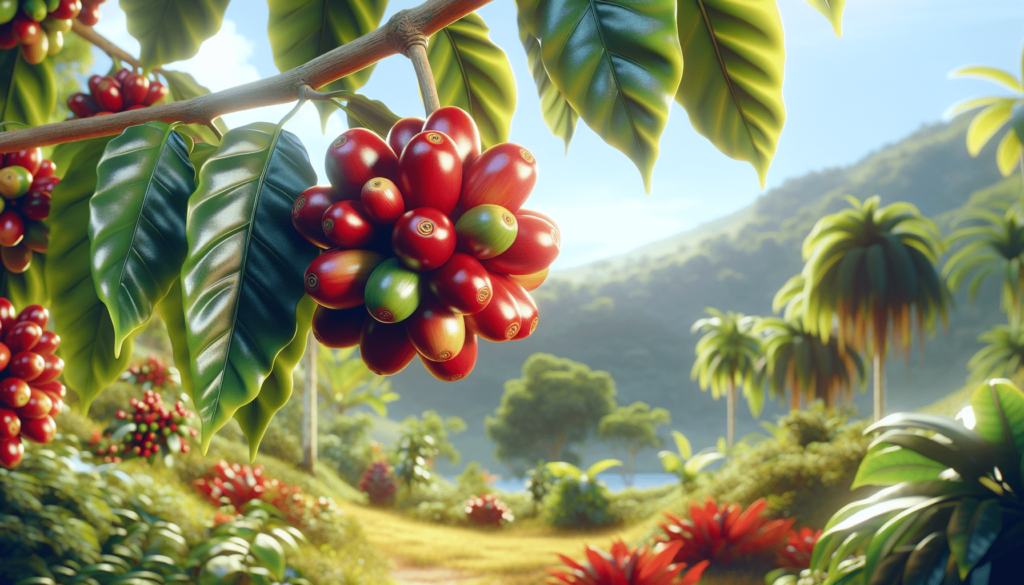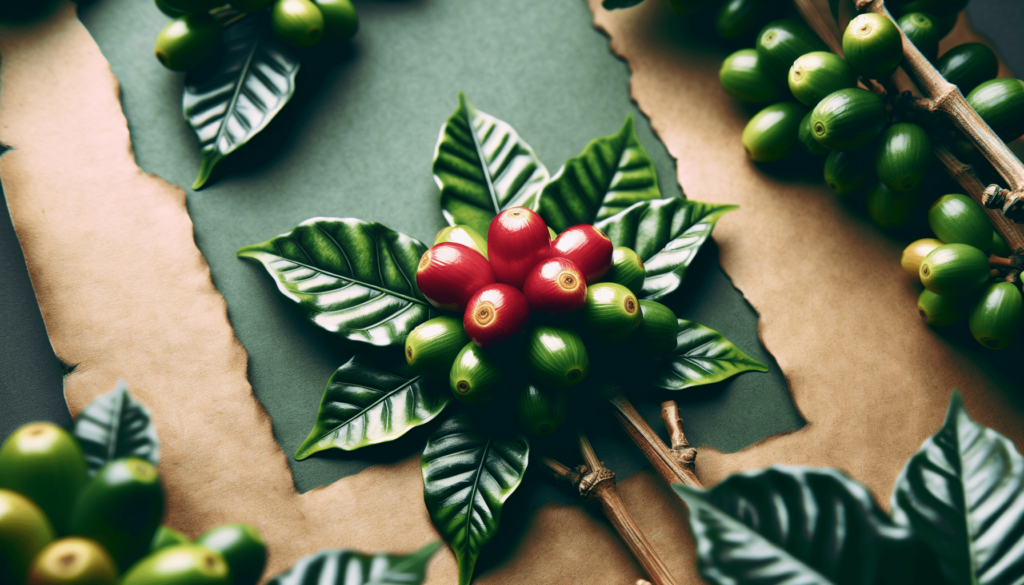Have you ever wondered what sets Liberica coffee apart from other types of coffee? It’s a question that intrigues many coffee enthusiasts looking to broaden their horizons. Liberica coffee may not be as well-known as its counterparts, Arabica and Robusta, but it carries distinct characteristics and a rich history that make it uniquely special.
The Basics of Coffee Varieties
Before diving into what makes Liberica coffee unique, it’s essential to understand the basics of coffee varieties. Coffee, as we commonly know it, primarily comes from three species: Arabica, Robusta, and Liberica. Arabica accounts for about 60-70% of the world’s coffee production, while Robusta takes up most of the remaining market share. Liberica, although less common, holds a niche yet important role in the coffee world.
Arabica
Arabica coffee is often celebrated for its intricate flavors and aromatic qualities. Grown at higher elevations, it tends to be sweeter and has a higher acidity compared to other coffee types.
Robusta
Robusta coffee, on the other hand, is recognized for its strong, full-bodied flavor. It has a higher caffeine content and is more bitter than Arabica. This variety often finds its way into instant coffee and espresso blends.
Liberica
Liberica coffee stands out due to its unique flavor profile, attributed to its distinct bean shape and size, and growing conditions. Although less commonly cultivated, it offers something special that attracts those looking for new and diverse taste experiences.
The Origins of Liberica Coffee
Liberica coffee originates from West Africa, particularly Liberia, from which it gets its name. It was officially discovered in the 19th century and has since been grown in parts of Southeast Asia, particularly the Philippines and Malaysia.
Historical Context
In the late 1800s, Liberica coffee gained international attention when a coffee leaf rust epidemic ravaged Arabica plantations in Southeast Asia. Farmers turned to Liberica as it showed a stronger resistance to disease, saving many from economic ruin.
Cultural Impact
In the Philippines, Liberica coffee, locally known as “Kapeng Barako,” has become a cultural icon. It’s deeply embedded in Filipino coffee culture and tradition, often associated with strength and masculinity.

Characteristics of Liberica Coffee Beans
Liberica beans are unlike any other coffee beans. They are larger, uniquely shaped, and offer a different sensory experience.
Size and Shape
- Size: Liberica beans are noticeably larger than both Arabica and Robusta beans.
- Shape: They possess a distinctive irregular shape, often described as teardrop or asymmetrical.
| Coffee Type | Bean Size | Bean Shape |
|---|---|---|
| Arabica | Medium | Oval |
| Robusta | Small | Round |
| Liberica | Large | Teardrop/Irregular |
Flavor Profile
Liberica coffee boasts a complex flavor profile that can be polarizing. It usually features:
- Fruity Notes: Often compared to jackfruit or other tropical fruits.
- Smoky Undertones: A smoky or even woody taste that is quite unique.
- Earthiness: Rich, earthy flavors that make it robust and full-bodied.
Aroma
The aroma of Liberica coffee is equally distinctive, often described as floral and fruity with hints of dark chocolate. It possesses a strong fragrance that can fill a room and awaken your senses even before you take your first sip.
Growing and Harvesting Liberica Coffee
Understanding the cultivation process can provide more insights into what makes Liberica coffee exceptional.
Suitable Climate and Soil
Liberica coffee thrives in hot, humid climates and is generally grown at lower altitudes compared to Arabica and Robusta. It prefers:
- Temperature: Ranges between 24-30°C.
- Soil: Well-drained, fertile soil with good organic matter.
Harvesting Process
Harvesting Liberica beans can be labor-intensive. Due to the larger size of the beans and the trees, which can grow to be much taller than Arabica or Robusta plants, it requires more effort and time.
Challenges
The cultivation of Liberica coffee comes with its own set of challenges:
- Disease Resistance: Although more resistant to certain diseases, Liberica is still vulnerable to pests.
- Lower Yields: It generally produces fewer beans per tree, making it less economically viable for farmers who seek higher productivity.

Processing Methods
The method used to process Liberica coffee can also impact its final taste. Common processing methods include:
Dry Processing
Involves drying the whole cherries in the sun, which can enhance the fruity and earthy notes in the beans. This is the most traditional method and is often used in regions where water is scarce.
Wet Processing
Beans are separated from the cherries before drying, which can influence a cleaner, brighter flavor profile. This method is less common for Liberica due to its larger size and unique characteristics.
| Processing Method | Description | Effect on Flavor |
|---|---|---|
| Dry Processing | Sun-dried cherries | Enhances fruity and earthy notes |
| Wet Processing | Separated beans | Cleaner, brighter flavor |
Brewing Liberica Coffee
Brewing Liberica coffee can be a rewarding experience, but it may require different techniques compared to brewing Arabica or Robusta.
Grind Size
Given the larger size and unique density of Liberica beans, you’ll want to adjust your grind size. A medium to coarse grind usually works best.
Water Temperature
To fully extract the flavors, a slightly higher water temperature of around 94-96°C can be beneficial.
Brewing Methods
While Liberica can adapt to various brewing methods, some techniques work better than others:
- French Press: Enhances its full-bodied, rich flavors.
- Pour-Over: Can highlight its complex, fruity notes.
- Espresso Machine: Works well but can be more challenging to dial in.
Liberica Coffee and Sustainability
Sustainability is an essential aspect of coffee cultivation and consumption. Liberica coffee offers some unique advantages and challenges in this context.
Environmental Impact
- Biodiversity: Due to its lower cultivation density, Liberica can contribute to greater biodiversity in farming areas.
- Water Usage: Dry processing reduces water usage, making it more environmentally friendly.
Economic Sustainability
Liberica coffee can offer economic benefits to regions that grow it by providing a niche market. However, the lower yield per tree means it is less likely to replace high-yield crops.
Health Benefits of Liberica Coffee
Like other types of coffee, Liberica offers various health benefits. It contains antioxidants, which can help protect your cells from damage and reduce inflammation.
Caffeine Content
Liberica coffee generally has a moderate caffeine content, falling between Arabica and Robusta. This makes it a balanced option for those who enjoy the stimulating effects of caffeine without the jitteriness associated with high caffeine levels.
Nutrient Profile
Liberica coffee contains essential nutrients such as magnesium and potassium, which can contribute to overall health.
| Nutrient | Benefit |
|---|---|
| Antioxidants | Protect cells, reduce inflammation |
| Magnesium | Supports muscle and nerve function |
| Potassium | Maintains healthy blood pressure |
Common Misconceptions About Liberica Coffee
It’s Impossible to Find
While Liberica is rarer than Arabica and Robusta, it’s not impossible to find. Specialty coffee shops and online retailers often stock it.
It’s Just a Trend
Liberica has a long history and cultural significance, especially in regions like the Philippines. It’s more than just a fleeting trend.
How to Enjoy Liberica Coffee
The best way to enjoy Liberica coffee is to keep an open mind. Its unique characteristics may take some getting used to, but once you appreciate its depth and complexity, you’ll likely find it rewarding.
Pairing with Food
Liberica coffee pairs well with rich, savory dishes as well as desserts. Think of hearty breakfasts, chocolate cakes, or even spicy foods.
Tasting Notes
When tasting Liberica coffee for the first time, take your time to appreciate its complexity. Notice its fruity, smoky, and earthy elements, and see how they interplay.
Conclusion
What is special about Liberica coffee? Its uniqueness lies in its origin, distinctive bean characteristics, complex flavor profile, and cultural significance. Though it may be less commonly encountered than Arabica or Robusta, Liberica offers a rich, rewarding coffee experience for those willing to explore. Whether you are a casual coffee drinker or a connoisseur, giving Liberica coffee a try can open up new horizons and deepen your appreciation for the diverse world of coffee.
